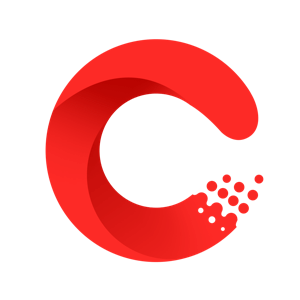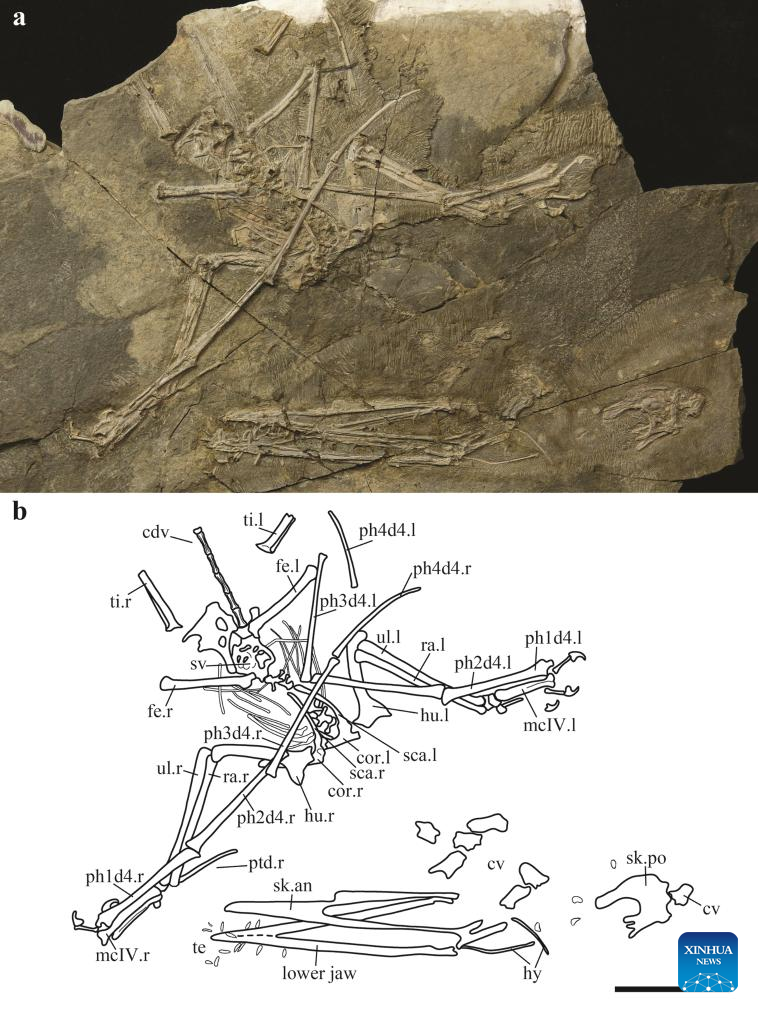
 0 Comment(s)
0 Comment(s) Print
Print E-mail Xinhua, March 13, 2025
E-mail Xinhua, March 13, 2025
This combo picture shows the image of the fossilized pterosaur Darwinopterus camposi sp. nov (above) and a skeleton diagram. [Institute of Vertebrate Paleontology and Paleoanthropology/Handout via Xinhua]
Chinese and Brazilian researchers have unearthed a nearly complete fossilized skeleton of a previously unknown pterosaur species in Jianchang County, northeast China's Liaoning Province.
The study, conducted by researchers from the Institute of Vertebrate Paleontology and Paleoanthropology (IVPP) under the Chinese Academy of Sciences, Jilin University, Regional University of Cariri, Federal University of Rio de Janeiro and other institutions, was recently published in the journal Annals of the Brazilian Academy of Science.
The fossil, dating back approximately 160 million years to the Late Jurassic Period, has been named Darwinopterus camposi sp. nov.
According to Wang Xiaolin, one of the corresponding authors from the IVPP, the species name honors Diogenes A. Campos, a renowned Brazilian geopaleontologist who has made significant contributions to collaborative paleontological research between China and Brazil.
This newly discovered species belongs to the Wukongopteridae, an important pterosaur clade from the Yanliao Biota in northeastern China.
The new species distinguishes itself from other members of Wukongopteridae by several unique features: a straight dorsal margin of the premaxillary crest without an extensive dorsal projection, a smooth lateral surface, and a dental arrangement of eighteen teeth on each side of the upper jaw and fourteen on each side of the lower jaw. Additionally, the fourth phalanx of its wing finger is shorter than the first.
Wang emphasized that this discovery enriches the diversity of the Wukongopteridae and provides new insights into the evolution of this group of pterosaurs.
China has emerged as a global hotspot for pterosaur research, with a series of discoveries that have advanced the study of these extinct flying reptiles. Over the past decade, many new fossil sites have been reported in Liaoning Province, leading to the identification of many previously unknown species.
Among the most remarkable findings are specimens associated with the Yanliao Biota, which, although distributed in regions similar to those of the Jehol Biota, are older in age, dating back to the Middle to Late Jurassic Period. The Wukongopteridae stand out as a prominent group of pterosaurs identified within the Yanliao Biota.
The collaboration on material from the Yanliao Biota between Chinese and Brazilian paleontologists dates back to 2009 when they jointly named the Wukongopteridae. Since then, three genera and five species of Wukongopteridae have been identified. With this latest find, the number of known species has now increased to six.
The Chinese-Brazilian research team will continue their collaborative efforts, focusing on in-depth research into the evolution, lifestyle, living environment, and global comparisons of pterosaurs, Wang said.

This illustration drawn by Maurilio Oliveira shows a restored image of the Darwinopterus camposi sp. nov. [Institute of Vertebrate Paleontology and Paleoanthropology/Handout via Xinhua]